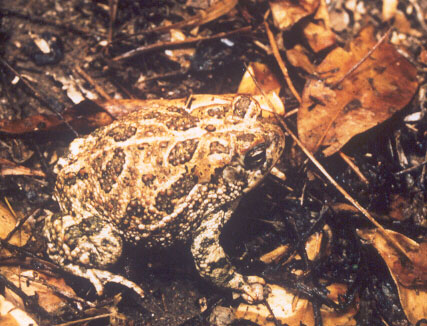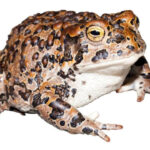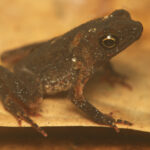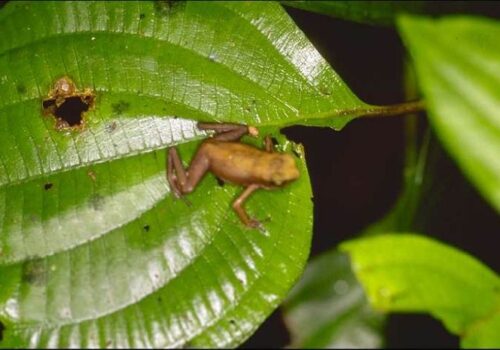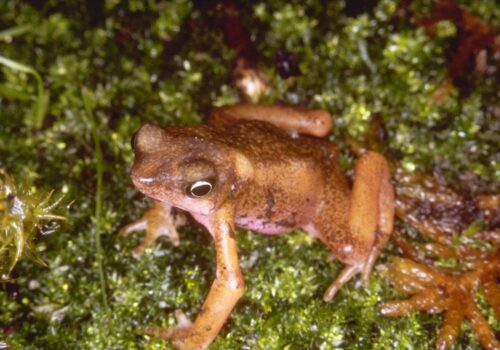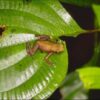- Anaxyrus cognatus: The Fascinating Life of the Great Plains Toad
- Taxonomy and Classification of Anaxyrus cognatus
- Natural Habitat and Geographic Range
- Physical Characteristics: Perfectly Adapted to the Plains
- Behavior and Life Cycle: Survival Strategies on the Plains
- Ecological Role and Importance
- Threats and Conservation Status
- Cultural and Scientific Significance
- Conclusion: Celebrating and Safeguarding the Great Plains Toad
Anaxyrus cognatus: The Fascinating Life of the Great Plains Toad#
Under the vast, wide-open skies of North America’s central grasslands, concealed amid the waving prairies and shifting sands lies a creature frequently overlooked yet profoundly significant—the Great Plains Toad, scientifically known as Anaxyrus cognatus. Observing this unassuming amphibian during a moist summer night after heavy rains, one might witness hundreds of these resilient animals emerging from their secret subterranean hideaways, scurrying and hopping about in their single-minded purpose: to mate and reproduce a new generation under cover of darkness.
Though modest in appearance and scarcely noticed by casual observers, the Great Plains Toad embodies the ecological resilience and adaptability required to survive the notoriously fickle climate of the North American plains. From explosive breeding habits following torrential rains to their remarkable proclivity to burrow and withstand prolonged drought, Anaxyrus cognatus is a captivating example of survival specialization, deserving attention from nature enthusiasts, students, and conservation advocates.
Taxonomy and Classification of Anaxyrus cognatus#
Traditionally classified within the widespread Bufonidae family—true toads—Anaxyrus cognatus underwent a significant taxonomic reshuffling not long ago. Formerly included in the genus Bufo, modern molecular and genetic research has now placed this species securely within the genus Anaxyrus. Known colloquially as the Great Plains Toad, this amphibian shares its genus with other North American toads, such as the American toad (Anaxyrus americanus) and the Woodhouse’s toad (Anaxyrus woodhousii).
Despite its reclassification, Anaxyrus cognatus remains distinctly recognizable, fascinating amphibian experts and casual wildlife observers alike due to its unique blend of traits adapted to its open grassland home.
Natural Habitat and Geographic Range#
The Great Plains Toad inhabits a broad and expansive range across the central United States, spreading northward upward into southern Canada and southward into northern Mexico. Generally found from southern Alberta and Saskatchewan in Canada, extending southward into Texas, and westward toward Arizona and portions of New Mexico, Anaxyrus cognatus has evolved strategies uniquely suited to the semi-arid grasslands, prairies, open woodlands, and agricultural lands that dominate this region.
A Life Reliant on Water and Burrows#
This species exemplifies amphibian adaptability, often thriving in environments many animals might deem inhospitable due to unpredictable rainfall and harsh seasonal cycles. Unlike frogs dependent strictly upon permanent water bodies, Great Plains Toads prefer temporary breeding pools and ephemeral ponds formed by seasonal rains. Because of this reliance upon unpredictable water sources, they masterfully balance terrestrial existence with aquatic necessities, retreating underground during dry periods, emerging only when the air moistens and the rainy season stirs the landscape back to life.
Soft, loose soil or sand proves critical to their survival. During periods of drought—common in their home range—these amphibians will burrow underground, occasionally to depths of nearly a meter. Using their specialized hind feet adapted for digging, each Great Plains Toad crafts a refuge where it remains dormant during extended dry spells, hidden from predators and conserving moisture until favorable conditions return.
Physical Characteristics: Perfectly Adapted to the Plains#
At first glance, the Great Plains Toad shows remarkable cryptic coloration—a clever adaptation enabling camouflage within its preferred environment. Its general coloration can range from sandy tan and olive green to dark brown, shades perfectly matching with background soils, grasses, and leaf litter typical of its habitat, thus rendering this animal almost invisible to potential predators or passing casual observers. Symmetrical, oval-shaped spots appear marked down its back behind prominent cranial crests—an identifying trait distinguishing it clearly from closely related toads.
Anatomy for Survival#
Adults generally measure between 5 to 11 centimeters (2 to 4 inches) in length, females slightly larger than males. Robust yet agile, their bodies prove ideal for extended underground life and occasional bursts of energy necessary during surface activity. Like other true toads, their skin is rough and covered in numerous tubercles or bumps—specialized glands capable of secreting mildly toxic substances. These bufotoxins provide essential defense mechanisms against would-be predators, including snakes, birds, and small mammals.
Behavior and Life Cycle: Survival Strategies on the Plains#
One of the most distinctive characteristics of Anaxyrus cognatus is its spectacular approach to reproductive behavior. Amid the unpredictable rainfall of the plains, breeding opportunities remain uncertain. Thus, the toads engage in explosive, episodic breeding events, triggered by heavy rains and sudden inundations of temporary ponds.
Explosive Breeding Events#
Following rainstorms, large congregations of vocal males chorus intensely at night, emitting a piercing, machine-like trill audible from considerable distances. Females, drawn by these deafening mating calls, quickly arrive, leading to mass-pairings. Females quickly deposit thousands—up to 20,000 eggs in extensive gelatinous strings—suspended prominently in the rapidly filling ephemeral ponds.
These eggs hatch rapidly—usually within two to three days—accelerating their development rates to meet the brevity of existing water sources. Tadpoles transform within weeks, metamorphosing into tiny juvenile toadlets. By late summer, young toads embark upon their terrestrial lives, ultimately settling underground to survive the coming winter’s harshness. This hurried, synchronized reproduction is a mesmerizing strategy that succeeds despite environmental uncertainty.
Ecological Role and Importance#
In the prairies and agricultural lands where the Great Plains Toad dwells, this species holds crucial ecological functions. Primarily insectivorous, adult toads prey avidly on insects, particularly beetles, grasshoppers, ants, moths, and other abundant invertebrates. By consuming large quantities of these potential agricultural pests, Great Plains Toads provide farmers an invaluable ecological service, reducing reliance on pesticides and encouraging a healthier ecosystem balance.
Moreover, by acting as both predator and prey, the Great Plains Toad helps sustain essential trophic relationships. Numerous predators such as snakes, birds of prey, and small mammals include this amphibian in their diet, making Anaxyrus cognatus an indispensable link in prairie communities.
Threats and Conservation Status#
Presently, the Great Plains Toad is classified by the IUCN Red List as Least Concern, an encouraging sign indicating relative stability across much of its range. Nevertheless, some scattered populations face threats from the expanding agricultural intensification, pesticide use, infrastructural development, and habitat degradation disrupting the delicate balance required for their specialized breeding events.
Climate change poses challenges too. Shifts in rainfall patterns, prolonged droughts, and rising temperatures may threaten ephemeral breeding ponds—crucial assets for Anaxyrus cognatus survival. Globally, countless amphibians have already fallen victim to the deadly chytrid fungus disease (Batrachochytrium dendrobatidis). For now, Anaxyrus cognatus’s susceptibility remains understudied, but vigilance remains vital.
Cultural and Scientific Significance#
To indigenous and rural communities inhabiting the plains and prairies of North America, Anaxyrus cognatus and its enchanting nocturnal chorus often symbolize the arrival of life-giving rains. This toad embodies life’s resilience, its presence and activity marking significant seasonal transitions within the ecosystem and cultural calendars.
Furthermore, Anaxyrus cognatus can serve scientific investigations as a valuable indicator species for assessing grassland ecosystem health, rainfall patterns, and climate influence. Continued research into this thriving amphibian contributes valuable knowledge to wildlife conservation, ecological health monitoring, and broader climate studies.
Conclusion: Celebrating and Safeguarding the Great Plains Toad#
Though it may be overlooked amid charismatic megafauna, the humble and resilient Great Plains Toad remains a remarkable and integral resident of North America’s interior grasslands. Its unique life strategies, ecological roles, and resilience in facing environmental uncertainty remind us of the complexities and interconnected nature of natural ecosystems.
By understanding, protecting, and celebrating creatures like Anaxyrus cognatus, we cultivate greater respect and stewardship toward the natural world. Let us honor this fascinating amphibian’s essential place within its ecosystem—committing ourselves to support environmental initiatives, ensuring their survival for generations to come.








